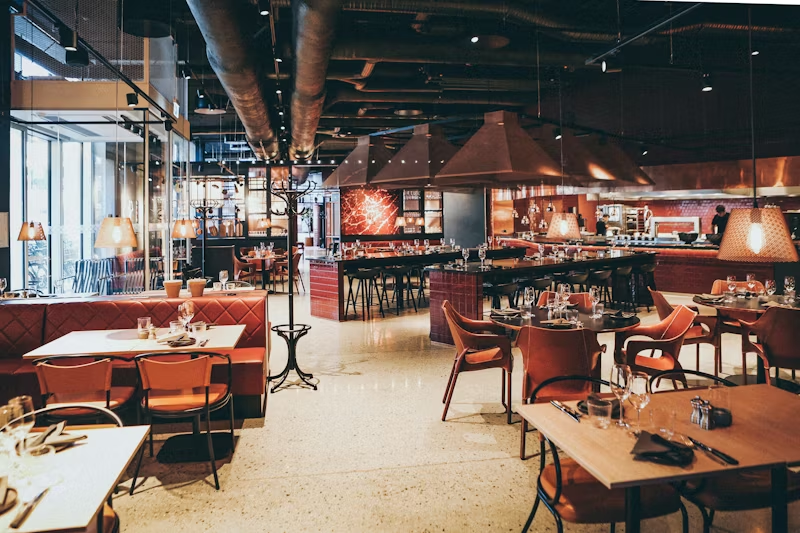Running a small restaurant comes with its own set of challenges and effective accounting helps restaurants focus on creativity and the things that matter within their business. In this comprehensive guide, we delve into the best practices for small restaurant accounting records, ensuring you meet regulatory standards and optimizing your financial processes for success in the hospitality industry.
Best Practices for Small Restaurant Accounting Records
1. Leveraging Technology for Efficiency
In the fast-paced world of hospitality, embracing technology is paramount. Make use of accounting software and restaurant management systems to handle payroll, track spending, and organize your record-keeping and budget. This reduces the possibility of mistakes and saves time so you can focus on your team.
Smaller restaurants will typically utilize Quickbooks Desktop or its cloud-based site Quickbooks Online which is perfectly suitable for their accounting needs. As you grow your restaurant by adding multiple locations, or a commissary, you will want to start looking at Restaurant365, a more complex software that will provide specific real-time data. Technology and new software can be overwhelming, but Paperchase is here to help you use them to your advantage.
2. Implementing Daily Sales Tracking
Restaurants process hundreds of transactions a day and as a business owner, keeping this information organized is important to effective accounting. This real-time revenue stream data enables more intelligent decision-making and better financial planning. Knowing exactly how much revenue your restaurant is bringing in is key, and closely monitoring your cash flow from opening is crucial to your restaurant’s financial health.
![]()
Keeping your cash flow in check will help you build strong relationships with vendors from the start and therefore allow for potential credit renegotiation and purchasing discounts down the road. Without vendors, there would be no business.
3. Categorizing Expenses Effectively
Accurate spending classification is essential to understanding your restaurant’s financial health. By organizing ingredients, labor, utilities, and overheads into categories, you can identify areas for cost improvement, and cost control. This can help you work towards investing in new opportunities down the line. In addition, it is important to regularly monitor your P&L and identify ballooning expense categories or miscategorization to keep oversight of any changes that require your attention. Paperchase will guide you through your P&L in a range of different reports so you don’t have to worry.
4. Embracing Cash Flow Management
In a tight-margin business like a restaurant, accurately monitoring cash flow is helpful to growing your business and keeping all your important information in check. This includes writing and collecting receivables on time from third parties like catering contracts and delivery services such as Uber Eats, Doordash, and Grubhub.

Cash flow management is another good way to evaluate potential investments. Programs like InKind offer capital investment without equity, fees, or interest and may be the right move for your business.
5. Ensuring Accurate Payroll Processing
Labor is one of the most important parts of running a business and accurate payroll processing is a key factor in keeping skilled labor. Establish benchmarks and a labor budget to distribute tips, taxes, wages, and benefits precisely. The requirements of a fast food restaurant are vastly different than those of a fine dining establishment. Paperchase will cater to the needs of your concept to your specific financial goals.
A good way to promote trust among employees and maintain a healthy business is to stay compliant with labor laws Payroll non-compliance is the quickest way to lose your business. Using the correct payroll services, classifying employees correctly, being aware of regulatory changes, and staying up to date with tax deadlines are principal factors in streamlining your labor.
6. Emphasizing Internal Controls
Putting strong internal controls in the right places protects your business from financial irregularities and fraud. Segregation of duties, frequent audits, and well-defined positions all contribute to a safe financial environment. Cash reconciliation and inventory are especially vulnerable areas of your restaurant. To prevent theft and save money, ensure you take inventory correctly and enact strong SOPs in the cash handling process. Secure cash drawers and managed shelves are crucial to a secure business.
7. Adhering to Regulatory Compliance
Money is already tight in a restaurant and having to pay fines is an unnecessary stress that you as a business owner do not need. Remain aware of the ever-changing local, state, and federal tax laws, and make sure your returns are filed and dues are paid on time to avoid fines.
It is critical to have a knowledgeable and specialized restaurant accountant, like Paperchase, as there are many intricacies in compliance. Restaurants have certain tax liabilities that a regular business accountant would not be expected to know. For example, a business in Manhattan may be required to pay CRT tax, a local tax many business owners are unfamiliar with. Another area that people often have trouble with is a change in the frequency of sales tax filing as their business grows. One liability that is specific to the restaurant industry is paying Use Tax on comps and out-of-state purchases.
Paperchase’s comprehensive advising is an asset in this area because we are extremely knowledgeable about local regulations across the US and internationally.
8. Implementing Inventory Management Systems
Everyone wants a more profitable business. A way to ensure this is by reducing waste and managing inventory. Use technology like Stock Take Online or Margin Edge to monitor stock levels, automate restocking procedures, and spot slow-moving merchandise. These tools will hold staff accountable, prevent theft, and ensure that every penny counts.

Use your creativity to lower food expenses by using slow-moving stock and reimagining wasted products into new recipes. An example of this is a restaurant that has a popular side dish such as crab salad, this salad has a quick expiration date, but the restaurant always has to keep it stocked to ensure they have enough for a rush. Instead of trashing that cash and letting the extra crab go to waste, implement a new dish that will prolong the shelf life of the raw material and attract new customers, like fried crab cakes.
9. Utilizing Financial Reports for Informed Decisions
KPIs (key performance indicators) are something you are probably familiar with. Anyone can access these reports that include average check spend from their POS system. But what about more specific information and an experienced advisor who can highlight red flags and opportunities?

At Paperchase we go beyond the the usual analytics to give you more insights into your business. We analyze missed reservation calls, time taken on each table, frequency of online orders, and even report on weather and seasonal effects on sales. Through the counseling and monitoring of these KPIs, we can uncover areas that need improvement such as waitstaff problems, revenue opportunities, or excess spending that affect your business.
One KPI Paperchase helps our clients investigate is a high percentage of comps and voids – there’s always more to the story hiding behind this metric. We’ve found theft, training issues, and scheduling problems that have saved businesses thousands of dollars just by investigating this overlooked area. Our accountants give our clients a comprehensive perspective provided by P&L accounts, balance sheets, and cash flow statements to identify risk and growth opportunities.
10. Investing in Professional Advice
Restaurants are one of the most complex businesses to do accounting for. With changing compliance and tax liabilities, a large accounts payable burden, and a big staff that often depends on a week-to-week paycheck, things can get complicated quickly. Seeking guidance from specialized hospitality accountants like Paperchase is a smart move for small restaurant owners.
Having someone to advise in these areas will mean a more profitable business in the future. Paperchase will help you keep an eye on your credit terms and promote a profitable business by working with all your vendors to avoid a cycle of nonpayment.
In addition to vendor management, accounts payable is one of the most critical responsibilities we handle for our Paperchase clients. With changing compliance and tax liabilities and a large accounts payable burden, working with an accountant who specializes in the restaurant industry can help provide valuable insights to increase profits, manage payables, navigate financial challenges, and optimize accounting practices.
Conclusion
At the end of the day, running a small restaurant is unpredictable and there is no one right way to succeed. However, observing specific data like KPIs, staying current with laws and regulations, and balancing your cash flow are just a few ways to prepare for success.
Still unsure? Don’t worry. Paperchase’s team of seasoned accounting professionals will be there every step of the way to ensure prosperity for your business. The comprehensive and cost-effective services we offer provide our clients with insight into their finances and foster growth from opening to expanding to franchising. Ready to turn your small business into a multi-location powerhouse? Give us a call.
Read more























